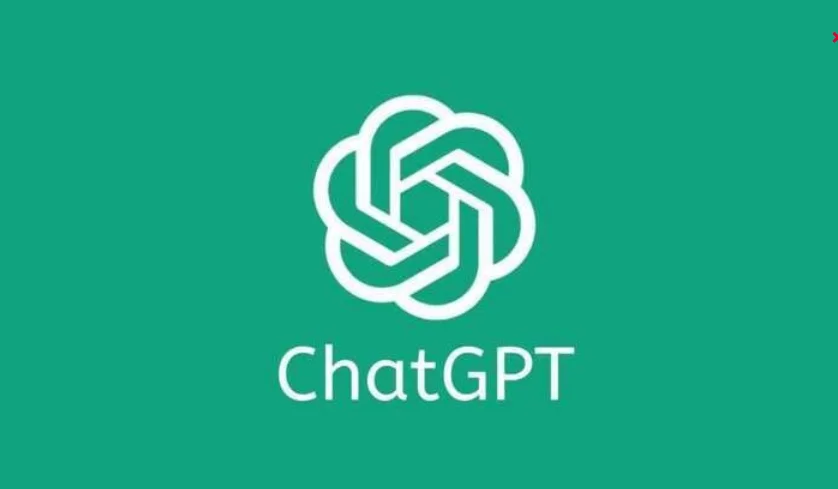Hey there, future tech wizards and curious minds! Have you ever chatted with ChatGPT, that super-smart computer program that can write stories, answer questions, and even help with homework? It’s like having a super-powered assistant right at your fingertips, ready to help you with almost anything you can imagine!
But here’s a little secret: just like talking to a new friend, there’s a trick to getting the best out of ChatGPT. It’s not magic, but it can feel like it when you know how to ask the right questions. Think of it like this: if you ask a friend, “Tell me something,” they might not know what you’re interested in. But if you say, “Tell me a funny story about a talking cat,” you’re much more likely to get a great answer!
That’s where our “9 Golden Rules” come in! These aren’t strict laws, but more like helpful tips and tricks to make your conversations with ChatGPT even better. By following these rules, you’ll learn how to ask questions in a way that helps ChatGPT understand exactly what you need, giving you super-helpful and super-cool answers every time. Ready to become a ChatGPT pro? Let’s dive in!
Give Clear Context
Imagine you’re telling a story to a friend. You wouldn’t just blurt out, “He ran!” You’d probably start by saying, “Once upon a time, there was a speedy rabbit named Roger, and he was late for a very important date. So, he ran!” See? You set the scene, you introduced the character, and then you explained what happened. That’s context!
When you talk to ChatGPT, giving clear context means telling it what’s going on. Don’t just say, “Help me study.” That’s like saying “He ran!” ChatGPT won’t know who “he” is or why he’s running. Instead, tell it: “I have a biology test in 2 days, and I need to study the circulatory system.” Now ChatGPT knows your goal (study for a test), the subject (biology), and the specific topic (circulatory system). It’s like giving it a map before asking for directions!
- Why this rule is golden: ChatGPT doesn’t know what you know or what you’re thinking. The more information you give it about your situation or your goal, the better it can understand and help you. It’s like shining a flashlight on your problem so ChatGPT can see it clearly.
Be Specific About Output
Think about ordering food at your favorite restaurant. You wouldn’t just say, “I want some food.” The waiter would be super confused! Instead, you’d say, “I’d like a cheeseburger, medium-rare, with extra pickles and a side of fries.” That’s being specific!
It’s the same with ChatGPT. If you just say, “Give me some questions about the circulatory system,” you might get anything from one question to a hundred, and they might be super easy or super hard. But if you say, “Give me 10 multiple-choice questions (MCQs) on the circulatory system, suitable for a 7th grader,” now ChatGPT knows exactly what to do. It knows the *type* of questions (MCQs), the *number* (10), and the *difficulty level* (7th grader).
- Why this rule is golden: Being specific about the output helps ChatGPT give you exactly what you need, in the format you want. It saves you time because you won’t have to ask it to re-do things, and it makes the answers much more useful.
Avoid Vague Prompts
This rule goes hand-in-hand with the first two. Imagine you tell your friend, “Let’s hang out sometime.” That’s pretty vague, right? Your friend might wonder, “When? Where? Doing what?” It’s hard for them to make plans because they don’t have enough information.
It’s the same with ChatGPT. If you say, “Help me study,” that’s a vague prompt. ChatGPT doesn’t know what subject you’re studying, what kind of help you need (notes, practice questions, explanations?), or how much time you have. A vague prompt often leads to a weak or general reply that isn’t very helpful.
Instead of “Help me study,” try something like: “I need help understanding how photosynthesis works. Can you explain it to me in simple terms, like you’re talking to a 7th grader?” See how much clearer that is? You’ve told it the topic, the type of help, and the level of explanation you need.
- Why this rule is golden: Vague prompts make ChatGPT guess what you want, and sometimes it guesses wrong. Being clear and avoiding vagueness means you’ll get much more useful and accurate information back.
Break It Into Steps
Imagine you want to bake a cake. You wouldn’t just look at a recipe that says “Bake a cake.” You’d need steps, right? “First, mix the dry ingredients. Second, add the wet ingredients. Third, pour into a pan. Fourth, bake for 30 minutes.” Breaking it down makes it easy to follow.
ChatGPT works best when you break down your requests into logical steps, especially for bigger tasks. If you ask it to “Write a report on the history of space exploration,” that’s a huge job! It might get overwhelmed or miss important parts. But if you break it down:
1. “First, give me a timeline of major space exploration events from 1950 to 2000.”
2. “Next, tell me about the key people involved in the Apollo missions.”
3. “Then, explain the purpose of the International Space Station.”
By breaking it into steps, you guide ChatGPT through the process, making sure it covers everything you need in the right order.
- Why this rule is golden: Breaking down complex tasks into smaller, manageable steps helps ChatGPT focus and deliver more accurate and complete responses. It’s like giving it a mini-plan for each part of your big project.
Ask for Examples
Have you ever tried to understand something new, and it just didn’t click until someone showed you an example? Examples are like magic keys that unlock understanding. If someone explains what a “metaphor” is, it might sound complicated. But if they say, “A metaphor is like saying ‘The classroom was a zoo!'” suddenly, you get it!
When you’re asking ChatGPT for information, especially about tricky topics, always ask for examples. For instance, if you ask, “How does photosynthesis work?” and ChatGPT gives you a scientific explanation, you can follow up with: “Can you give me 3 ways photosynthesis helps humans in real life?” This makes the information much more relatable and easier to remember.
- Why this rule is golden: Examples make abstract ideas concrete. They help you connect new information to things you already know, making learning much more effective and fun. ChatGPT can generate all sorts of examples, so don’t be shy to ask!
Choose a Format
Imagine you have a bunch of toys. If you just dump them all in a pile, it’s hard to find what you’re looking for. But if you organize them into different bins – one for LEGOs, one for action figures, one for board games – it’s much easier to see everything. That’s what choosing a format does for information!
When you ask ChatGPT for information, tell it how you want that information presented. Do you want it as a bulleted list? A numbered list? A table? A short paragraph? A long essay? For example, instead of just saying, “Tell me about planets,” you could say, “Summarize the main characteristics of the 8 planets in our solar system as a table, including their size, distance from the sun, and number of moons.”
- Why this rule is golden: The right format makes information much easier to read, understand, and use. A table is great for comparing things, a list is good for steps, and paragraphs are best for detailed explanations. By choosing a format, you help ChatGPT organize its thoughts in a way that’s most helpful for you.
Assign a Role
Think about how you talk differently to different people. You might talk to your best friend one way, your teacher another way, and your grandparents yet another way. Each person has a different role, and you adjust your communication to fit that role.
ChatGPT can do the same thing! You can tell it to “Act as a finance professor” or “Act as a friendly tour guide” or “Act as a wise old wizard.” When you assign a role, ChatGPT changes its tone, its vocabulary, and even the way it explains things to match that role. This makes the answers much more engaging and tailored to what you need.
For example, if you ask, “Explain the stock market,” and you assign the role “Act as a finance professor,” you might get a very detailed, technical explanation. But if you say, “Act as a helpful older sibling, explain the stock market to me,” you’ll likely get a simpler, more relatable explanation with analogies you can understand.
- Why this rule is golden: Assigning a role helps ChatGPT understand the perspective and tone you’re looking for. It’s like putting on a costume for a play – it helps ChatGPT get into character and deliver a performance that’s just right for your needs.
Treat it like a Human Assistant
Even though ChatGPT is a computer program, it helps to think of it as a very smart human assistant. Imagine you have a new intern helping you with a project. You wouldn’t just grunt at them or give them a single word. You’d give them clear instructions, be polite, and explain what you need.
This means writing your prompts in complete sentences, being clear and direct, and avoiding slang or overly casual language that might confuse it. For example, instead of “gimme sum info on space,” try “Please provide some information on the history of space exploration.” It’s about being respectful and precise, just like you would with a real person.
- Why this rule is golden: While ChatGPT is incredibly advanced, it still relies on the words you give it. The clearer and more human-like your instructions are, the better it can understand your intentions and deliver exactly what you’re looking for. It’s a two-way street of good communication!
Refine and Retry
Think of this rule like practicing for a sport or learning a new skill. The first time you try something, it might not be perfect. You might miss the basket, or your drawing might not look exactly right. But you don’t give up, do you? You try again, maybe a little differently, and you get better.
Interacting with ChatGPT is similar. Your first prompt is like a first draft. If the answer isn’t quite what you wanted, don’t just give up! Look at the answer and think: “What could I have asked differently?” Maybe you needed to be more specific (Rule 2), or provide more context (Rule 1), or break it into steps (Rule 4).
It’s okay if the first answer isn’t perfect. The best way to get better at using ChatGPT is to refine your prompts and retry. It’s a learning process for both you and the AI. The more you practice, the better you’ll become at crafting prompts that get amazing results.
- Why this rule is golden: This rule is all about continuous improvement. It teaches you to be a better communicator and to think critically about how you ask for information. Better input always leads to better output, and refining your prompts is the key to unlocking ChatGPT’s full potential.
Become a ChatGPT Master!
So there you have it – the 9 golden rules for having super-smart, super-helpful conversations with ChatGPT! Remember, it’s not about being a computer genius; it’s about being a good communicator. Just like you learn to talk to your friends, family, and teachers, you can learn to talk to AI in a way that gets you the best results.
By giving clear context, being specific, avoiding vagueness, breaking things into steps, asking for examples, choosing the right format, assigning roles, treating it like a human assistant, and always being ready to refine and retry, you’re not just using a tool – you’re mastering the art of digital communication.
Practice these rules, experiment with your prompts, and watch how much more amazing your conversations with ChatGPT become. You’ll be amazed at what you can create, learn, and discover when you know how to ask the right questions. Happy chatting, and go forth and become a ChatGPT master!


